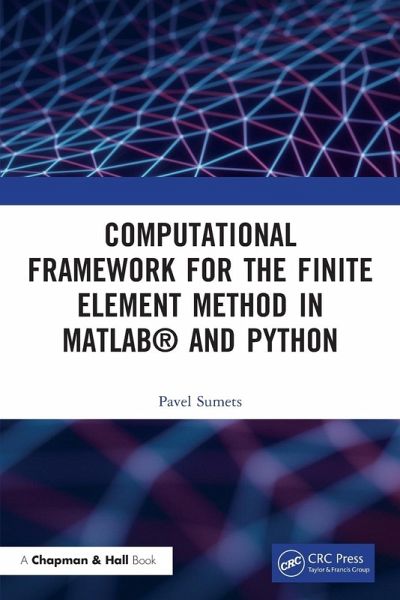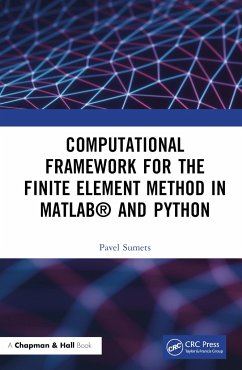
Computational Framework for the Finite Element Method in MATLAB® and Python
Versandkostenfrei!
Versandfertig in 6-10 Tagen
49,99 €
inkl. MwSt.
Weitere Ausgaben:

PAYBACK Punkte
25 °P sammeln!
Computational Framework for the Finite Element Method in MATLAB® and Python aims to provide a programming framework for coding linear FEM using matrix-based MATLAB® language and Python scripting language. It describes FEM algorithm implementation in the most generic formulation so that it is possible to apply this algorithm to as many application problems as possible.Readers can follow the step-by-step process of developing algorithms with clear explanations of its underlying mathematics and how to put it into MATLAB and Python code. The content is focused on aspects of numerical methods and...
Computational Framework for the Finite Element Method in MATLAB® and Python aims to provide a programming framework for coding linear FEM using matrix-based MATLAB® language and Python scripting language. It describes FEM algorithm implementation in the most generic formulation so that it is possible to apply this algorithm to as many application problems as possible.
Readers can follow the step-by-step process of developing algorithms with clear explanations of its underlying mathematics and how to put it into MATLAB and Python code. The content is focused on aspects of numerical methods and coding FEM rather than FEM mathematical analysis. However, basic mathematical formulations for numerical techniques which are needed to implement FEM are provided. Particular attention is paid to an efficient programming style using sparse matrices.
Features
Contains ready-to-use coding recipes allowing fast prototyping and solving of mathematical problems using FEM
Suitable for upper-level undergraduates and graduates in applied mathematics, science or engineering
Both MATLAB and Python programming codes are provided to give readers more flexibility in the practical framework implementation
Readers can follow the step-by-step process of developing algorithms with clear explanations of its underlying mathematics and how to put it into MATLAB and Python code. The content is focused on aspects of numerical methods and coding FEM rather than FEM mathematical analysis. However, basic mathematical formulations for numerical techniques which are needed to implement FEM are provided. Particular attention is paid to an efficient programming style using sparse matrices.
Features
Contains ready-to-use coding recipes allowing fast prototyping and solving of mathematical problems using FEM
Suitable for upper-level undergraduates and graduates in applied mathematics, science or engineering
Both MATLAB and Python programming codes are provided to give readers more flexibility in the practical framework implementation














